Wildfires' impact on southeast Wisconsin climate
The Bobcat Fire started in and around Angeles National Forest in California on September 6, 2020. Photo Credit: Inciweb, inciweb.nwcg.gov
MILWAUKEE - Wildfires have become one of the top natural disaster headlines over the recent years. Extended periods of drought and extreme heat are a few factors contributing to rapid wildfire development and spread.
NOAA scientists have been studying the increase in natural vs. human caused fires. Short-term human caused fires range from fireworks to igniting a fire when conditions are favorable for it to spread (low humidity, strong winds). However, long-term human caused climate change could lead to fires that are a lot more frequent in the future.
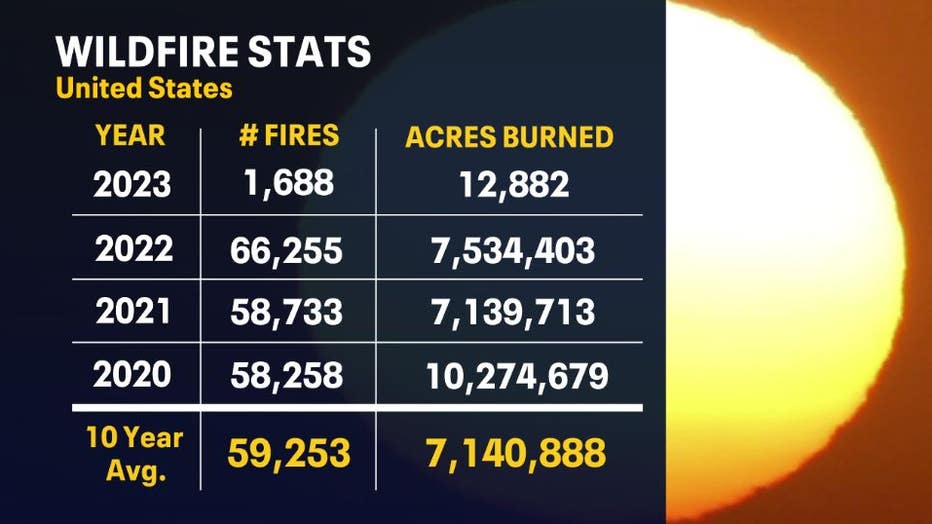
Data from the National Interagency Fire Center (NIFC) shows that 2022 had more fires and acres burned than the normal ten-year average.
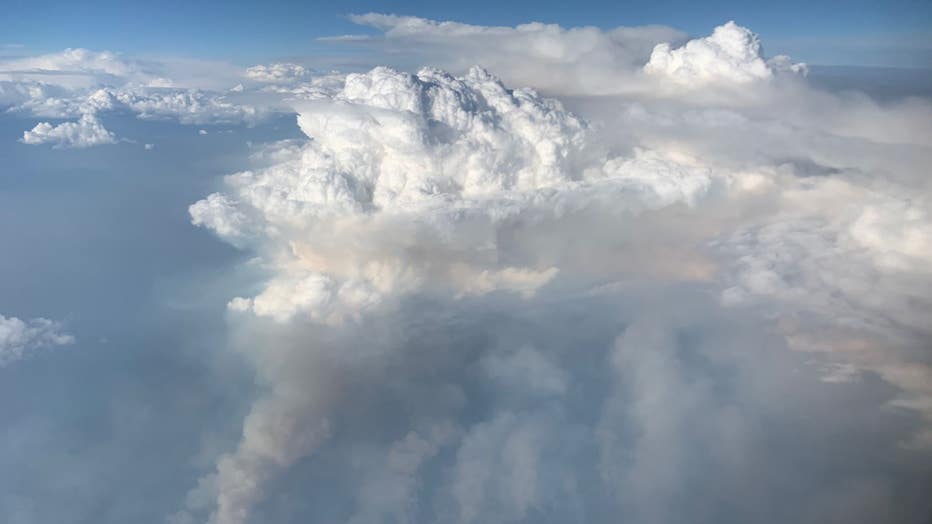
The Williams Flat fire in British Columbia generated a fire cloud, or pyroCb, that injected smoke into the stratosphere on August 8, 2019. Photo Credit: David Peterson, U.S. Navy.
The intense heat of a wildfire can cause a thunderstorm that carries smoke high into the air – these are called pyrocumulonimbus or pyroCbs. Pyro is the Greek prefix for fire. As the hot air rapidly rises, it expands and cools.
Once enough water vapor is present, it condenses onto the particulate matter or ash from the fire in the cloud. If there is still enough water, intense rain can occur in addition to lightning, strong winds, and even fire tornadoes. The added winds and lightning can contribute to igniting and/or spreading fire into areas not initially burning.
SIGN UP TODAY: Get daily headlines, breaking news emails from FOX6 News
These intense fire clouds are becoming more common over the past years. Reoccurring fires have caused an uptick in extensive damage, loss of life and/or property, and poor air quality. While these impacts seem to be closer to the surface, scientists with NASA and NOAA are further examining what happens to all that smoke that rises higher into the atmosphere.
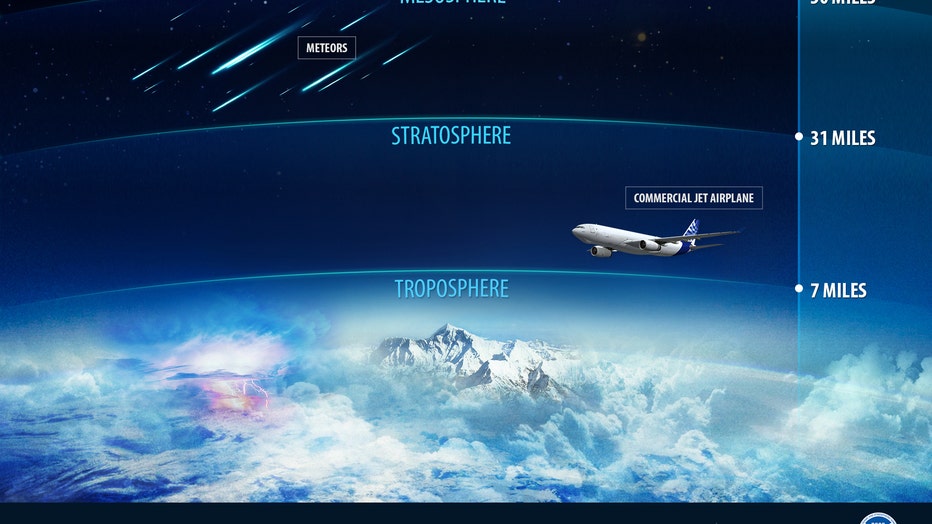
Photo Credit: NOAA
Influences of smoke as it rises
Wildfires create large towers of billowing smoke four to eight miles above Earth’s surface. This location reaches into the bottom of the Stratosphere where data is showing that major long-term climate impacts are possible. The smoke from wildfires was observed lingering in the lower Stratosphere for longer than expected. This could lead to big changes in climate and other unknown effects. Scientists now know that smoke from wildfires make up a significant 20% of the black carbon and organic carbon in the lower stratosphere over the past 10 years.
FREE DOWNLOAD: Get breaking news alerts in the FOX6 News app for iOS or Android
Pyrocumulonimbus or pyroCbs are similar to large volcanic eruptions where smoke and ash eject into the Stratosphere. We know from volcanoes, the particles of smoke and ash in the atmosphere reflect sunlight. This leads to a cooling effect for Earth’s temperatures as long as they remain in the stratosphere, which could be for a long deration. The same effect could occur from large wildfires.
So these violent eruptions and fires harm but could possibly help our planet too. Further analysis must be recorded about ongoing levels and the potential future impacts this could have.

Map showing vertically integrated smoke (smoke in a vertical column in Earth's atmosphere) on July 30,2021. Photo Credit: NOAA
How wildfires affect Wisconsin if far away
While most of these wildfires have occurred near the western portions of the United States and Canada, the overall impacts still reach southeast Wisconsin sometimes. As smoke from wildfires rise into the atmosphere, it can interact with the jet stream four to eight miles above Earth’s surface.
The jet stream, an area of strong winds in the upper levels of the atmosphere, helps transport smoke across the United States, typically from west to east. Forecast models are able to estimate the movement of wildfire smoke in the atmosphere represented by the bright colors above.
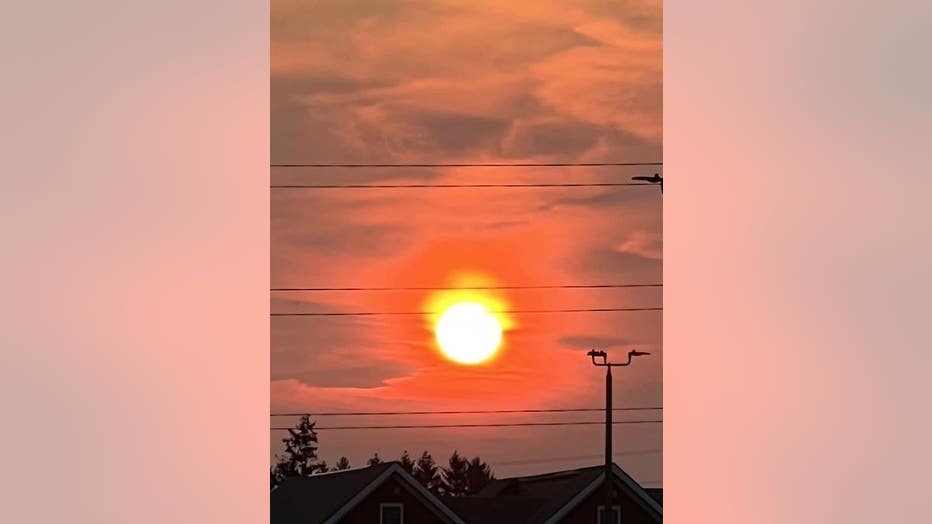
September 14, 2022 Hazy sunset over southeast Wisconsin due to wildfires out west. Photo Credit: Tom Wachs
Smoke can cause hazy skies during the day and produce more vibrant/vivid sunrises and sunsets. The color of the sky can appear red/orange because smoke particles can scatter longer wavelengths of light (red light) while blocking shorter wavelengths (blue, green, yellow)
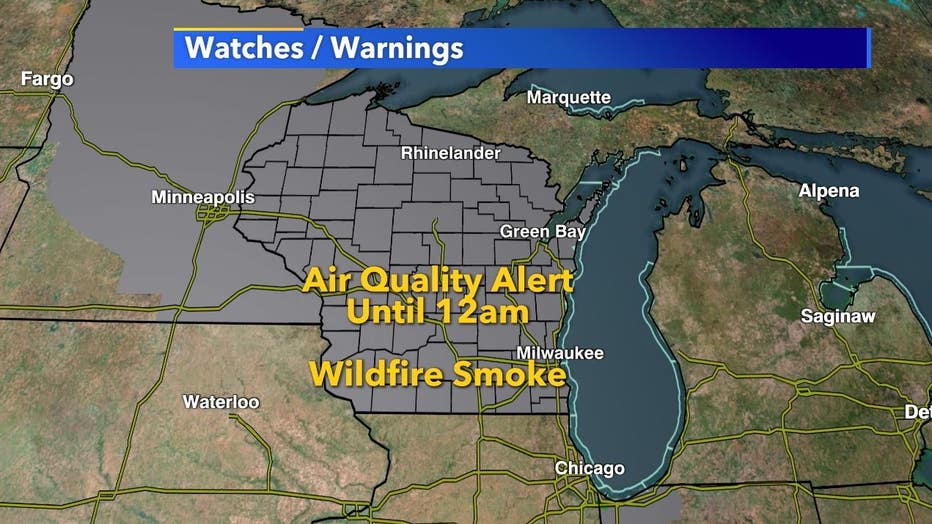
Smoke can also cause air quality problems and especially impact people with respiratory or heart conditions. Sometimes when smoke from wildfires is present, air quality alerts can be issued by the National Weather Service. It is important to view the AQI, air quality index, to see how polluted the air is in your location on days when smoke is present.
Additional tips to follow when smoke and poor air quality is around is:
- Wear a mask outside
- Reduce time spent outside
- Close all windows to prevent polluted air from entering your home and/or car
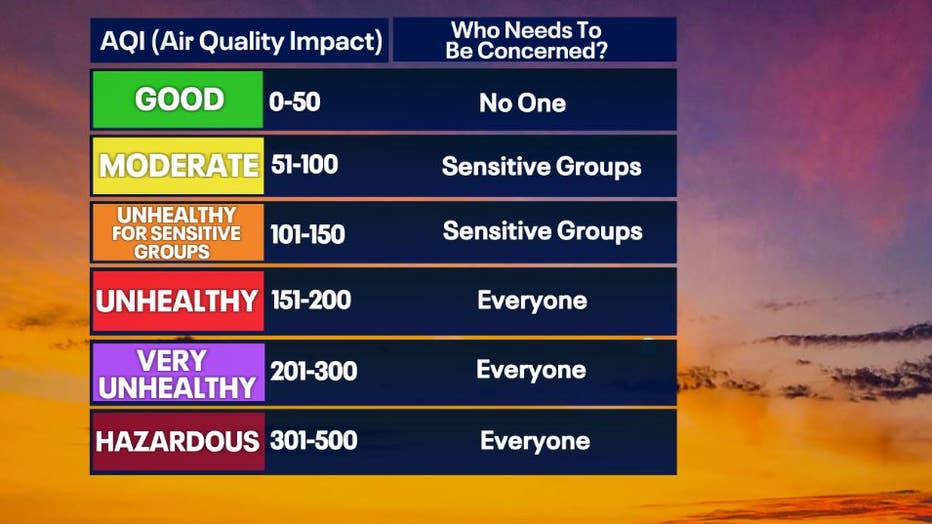
Why it's important to follow actions above
Particulate matter/particle pollution, also known as PM, is a mixture of a solid particle (e.g. dust, dirt, smoke) mixed with liquid droplets in the air. We inhale particulate matter every day, but there are various sizes of these pollutants in the air. PM 2.5 micrometers or smaller causes a greater health risk due to its small size in the air, it can easily be inhaled into the lungs and cause health problems. These small particles in the air give the sky a hazy appearance when smoke is present.
Even though in Wisconsin we don’t always experience the direct impact of wildfires, aspects of these disasters can still migrate our way.

